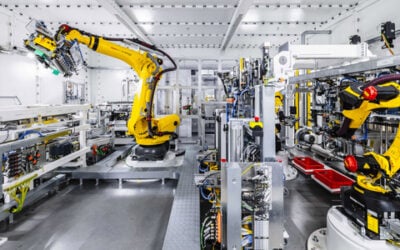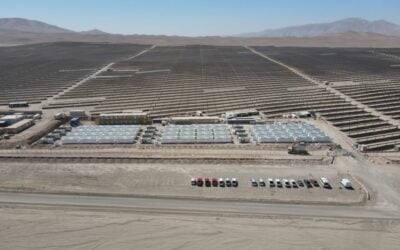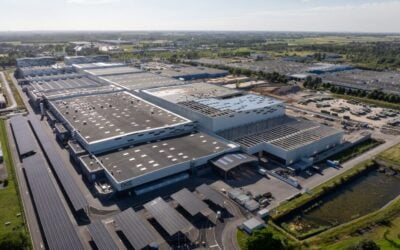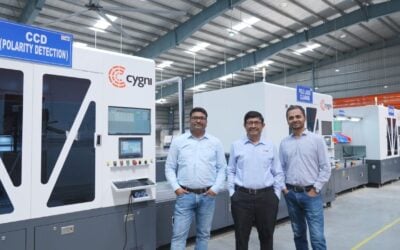
Latin America (LATAM) has no lithium-ion battery gigafactories despite huge lithium-ion reserves, but CATL’s Mexico announcement could be the first of many, if economic and business drivers fall into place.
There are several reasons why the region has lagged behind other continents, Fitch associate analyst Phoebe O’Hara, who specialises in EV supply chains, told Energy-Storage.news. But various trends mean the firm expects LATAM to grow its battery manufacturing over the long term, although O’Hara said this will probably be limited to Mexico, Argentina, Chile and Brazil.
Enjoy 12 months of exclusive analysis
- Regular insight and analysis of the industry’s biggest developments
- In-depth interviews with the industry’s leading figures
- Annual digital subscription to the PV Tech Power journal
- Discounts on Solar Media’s portfolio of events, in-person and virtual
One big barrier is that, while the continent has a substantial portion of today’s mining activities and the largest reserves in the world, its lithium refining capacity is much weaker, with the vast majority of this done in China.
The fact that having lithium alone is far from enough to foster a domestic battery manufacturing industry was pointed out by one of the proponents of a project in Chile, which has the world’s largest reserves by some distance, which never got off the ground.
That would have been the continent’s first, a title which looks set to be taken by the world’s largest battery manufacturer CATL which recently announced plans to build a facility in Mexico and is currently assessing locations.
It should be stated that there are several facilities producing lithium-ion batteries that are operational today or set to go online later this year, in Bolivia (Quantum Batteries), Argentina (UniLib) and Brazil (BYD) for example. But all are small-scale or attached to an existing niche EV production plant like trucks or buses and not serving the general market.
The lack of a substantial domestic passenger EV market in LATAM is itself another major barrier to the development of lithium-ion gigafactory projects in the region, O’Hara said. EV sales drive the EV production market because it makes sense to sell locally.
“We’re expecting sales of only 60,000 EVs in LATAM this year compared to 7 million in Asia, 1.4 million in North America and 2.7 million in Europe. We are seeing a growth in EV production but not to the extent in the other continents,” O’Hara said.
Adding: “There are also substantial gaps in regulatory frameworks and government support needed for these sorts of projects, and a really high operational risk in general across the continent when you consider the size of the investment needed, generally in the billions of US dollars.”
Argentina does have plans to substantially expand its lithium refining capabilities – with Fitch expecting it to double its share of the global lithium refining market by 2027 – and a battery manufacturing plant launching later this year may be a sign of things to come.
Sometimes referred to as UniLib, the plant in Buenos Aires has space for an eventual annual production capacity of 13GWh and is a collaboration between a host of state-owned companies and organisations including the Ministry of Science, Technology and Innovation (MINCyT). It will initially serve the needs of the Ministry of Defence and the Ministry of Production of the Province of Buenos Aires.
And while the presence of lithium reserves in LATAM has not been enough to onshore downstream parts of the lithium-ion battery supply chain, the skyrocketing price of the metal has led some companies reliant on to make direct investments into the region to have more control over the crucial material. Their presence in the market could be arguably make them more likely to consider local battery production sites too in the long-run, assuming the other economic and business factors fall into place.
“In the last year alone we’ve seen eight investments into lithium mining in LATAM directly by automakers or battery manufacturers to ensure their supply in the region,” O’Hara said.
“The need for lithium is making it really important to have a foothold in the region and I think as EV demand picks up, which we expect to happen over the 2020s, there will be a lot more EV production sites and a lot more gigafactories that will be needed to supply those factories.”
More gigafactories producing lithium-ion battery cells, even if primarily for EVs, will help ease up bottlenecks in supply. Energy-Storage.news has heard from multiple sources that most battery cell manufacturers are sold out for the next two years.
And the continent’s close access to lithium and – in the long-run – more refining capabilities should mean it does not face the same sorts of shortages that some analysts have said mean some of Europe’s gigafactories will need to change their planned battery chemistry.






